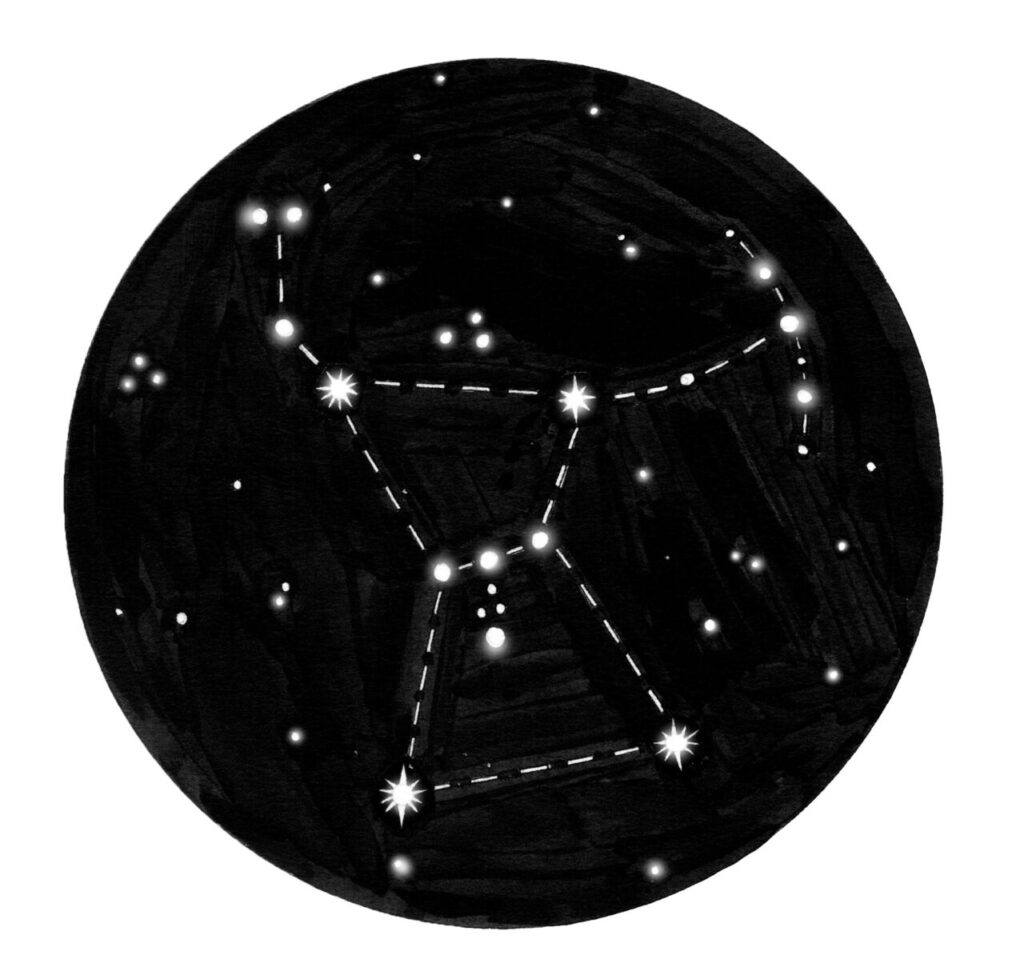
You know Orion always comes up sideways.
Throwing a leg up over our fence of mountains,
And rising on his
hands, he looks in on me…
So wrote Robert Frost in his poem “The Star-splitter.” The aesthetic wonder of this easy-to-find constellation and its twinkling starlight have captured the imagination of countless stargazers. But the science behind Orion’s stars is also compelling.
“Orion has a lot of really good science going on in it,” said John Gianforte, director of the University of New Hampshire Observatory. “It’s a great place to start learning about the night sky.”
Orion is one of the most easily distinguished constellations, in part because of the three bright stars that form its belt. The hunter figure of Orion also wields a club raised above his head, a shield held before him, and a sword hanging from his belt.
Orion is best observed in the Northern Hemisphere from December through March as it makes its way from east to west in the nighttime sky. In the early evening, during the first full week of February, look southward, about halfway up the sky for the three stars in a row that represent his belt. Hold your arm straight out and try to block these stars with your hand. The area of the sky blocked by your hand will be about the size of Orion. The two bright stars near the top of your fingers are Orion’s shoulders. The two bright stars at the bottom of your palm are his feet.
Betelgeuse is the bright, red-colored shoulder star on the left. Rigel is the bright, blue-white foot star on the right. Most of the other stars look yellow or white.
“The color of these stars depends on their surface temperature,” said Gianforte.
 Think of the colors of stars as iron in a blacksmith’s shop. When the iron is heated in the hearth, it turns red in color. Heat the iron a little more and it turns yellow. When it gets even hotter, the iron glows white. Since stars are made up mostly of hydrogen and helium, the color changes happen at much higher temperatures than seen with hot iron, but the principle is the same.
Think of the colors of stars as iron in a blacksmith’s shop. When the iron is heated in the hearth, it turns red in color. Heat the iron a little more and it turns yellow. When it gets even hotter, the iron glows white. Since stars are made up mostly of hydrogen and helium, the color changes happen at much higher temperatures than seen with hot iron, but the principle is the same.
Of the stars we can see with our eyes, red stars are the coolest. The surface temperature of Betelgeuse is about 6,000 degrees. While that may seem hot to us on Earth, it’s rather chilly compared to blue-colored stars; Rigel’s surface temperature is a whopping 22,000 degrees! The yellow-white stars, including our own sun, have surface temperatures around 10,000 degrees.
After you’ve found Orion and distinguished its brightest stars, find the Orion Nebula. It is one of the bright spots making up his sword, which appears to hang from his belt. This nebula is a giant cloud of interstellar dust and the gases helium and hydrogen, some of which is coalescing to form new stars. The radiation from these stars energizes the gases, causing the nebula to glow, similar to how fluorescent lights work. Light from nearby stars also reflects off the surrounding dust, revealing this nebula as one of the most awesome sights in the night sky.
Most of the stars in Orion have no relationship to each other. They only form an image from our viewpoint here on Earth. In fact, if you were able to view the same stars from another part of the galaxy, you wouldn’t see the image of Orion at all. All these stars would appear to be in different places. That’s because stars in Orion lie at different distances from us, measured in light years.
If you could travel the speed of light, you could make almost 35 round trips from Boston to San Francisco and back every second. Travel that fast in a straight line for a whole year and you’ll be one light-year away from the Earth, or about 6 trillion miles. That is a 6 followed by 12 zeros.
Rigel, the brightest star in Orion, is 870 light-years away from us. Betelgeuse lies 642 light-years away, and the Orion Nebula lies 1,500 light-years away! But from our vantage point on Earth, the stars form the singular image of the mighty hunter, Orion.
So, when you are out in the early evening this time of the year, and Orion looks in on you after he has risen above the fence of mountains (or trees or neighborhood houses), look back on him and marvel at the wonders of the night sky.
Tim Loftus is an environmental chemist and writer based in central Massachusetts. Illustration by Adelaide Murphy Tyrol. The Outside Story is assigned and edited by Northern Woodlands magazine and sponsored by the Wellborn Ecology Fund of the New Hampshire Charitable Foundation: nhcf.org.




